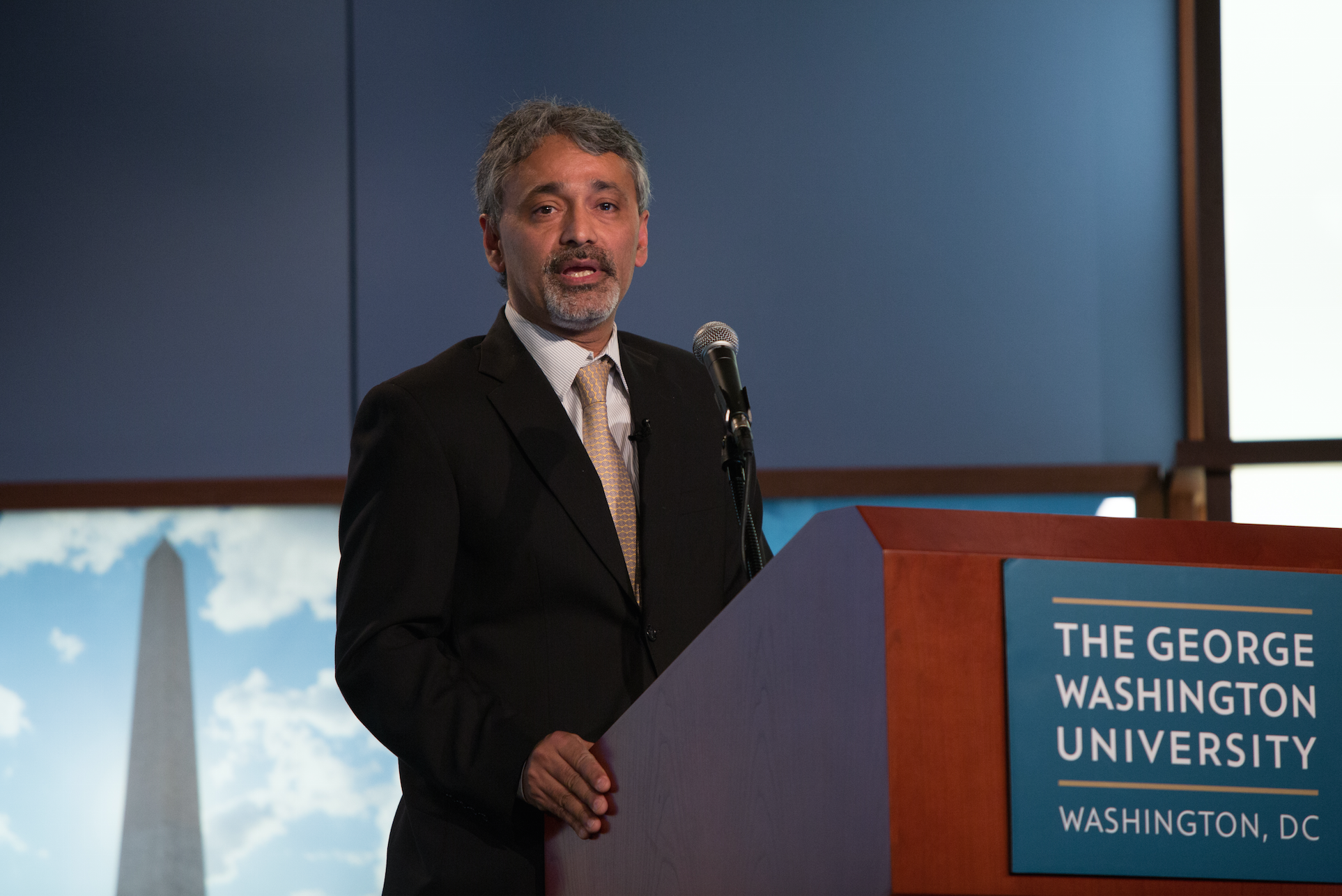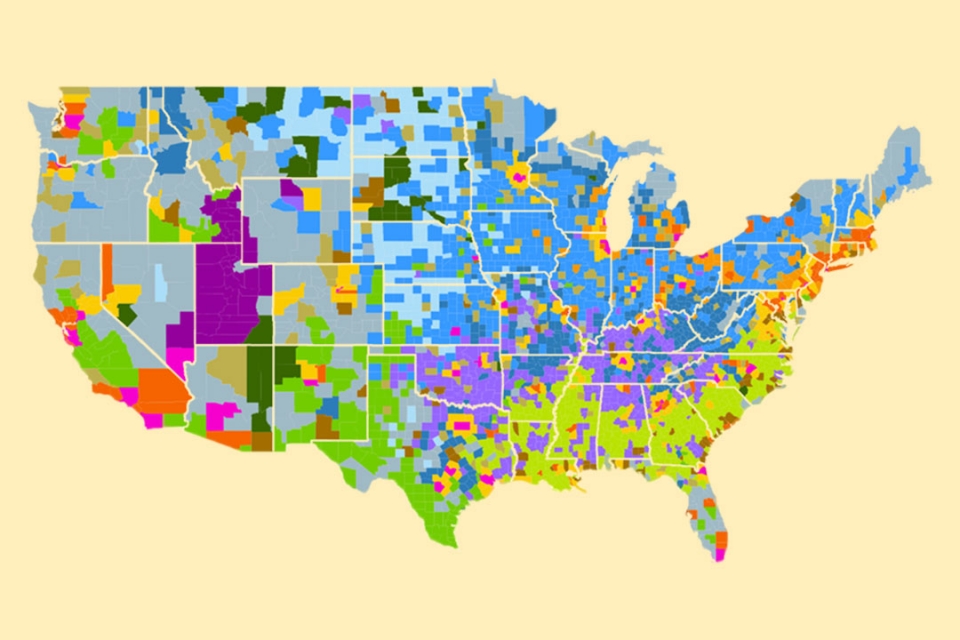By Kristen Mitchell
Five teams of George Washington University researchers have received more than $4 million in grant funding to pursue innovative research projects in fields across academic disciplines. These projects range from building more efficient solar cells to fighting childhood cancer and improving health care equity.
Addressing Intersectional Health Care Needs
Lisa Bowleg, professor of psychology in the Columbian College of Arts and Sciences, was awarded $739,767 over three years from the W.K. Kellogg Foundation for the “Intersectionality Checklist Project,” which will provide lawmakers, medical practitioners and other stakeholders with an implementation guide to enhance maternal and child health policies and programs for diverse women and children in the United States.
“The health inequities among racial and ethnic minority women and children in the United States are staggering,” Dr. Bowleg said. “High rates of poverty, financial insecurity and structural discrimination underscore the need for intersectional, social-justice oriented maternal and child health policies and programs.”
Researchers will select appropriate case studies, study them, and utilize the results to develop an “Intersectionality Checklist,” a user-friendly, single-page checklist that will help decision-makers address the intersectional void in most maternal and child health policy. Policymakers often emphasize single-axis positions of race or gender, and ignore how multiple marginalized social positions such as race, gender, socioeconomic status, sexual identity and immigration status intersect to influence the health and well-being of women and children, Dr. Bowleg said.
The checklist and subsequent implementation guide will help stakeholders ensure the policies and programs they are working to enact address the needs of populations that have been historically invisible and/or are often the most vulnerable. The list will be faithful to the core tenets of intersectionality, Dr. Bowleg said, asking users for example, whether programs and policies are being developed in conjunction with marginalized communities to best understand and respond to their needs.
“There are certain groups that are going to fall through the cracks if their intersections are not considered,” Dr. Bowleg said. “You can’t create good policies for groups or for problems you can’t see.”
With the Kellogg Foundation’s support, Dr. Bowleg will work alongside Shawnika Hull, co-investigator and a Milken Institute School of Public Health assistant professor, and Jenne Massie, a postdoctoral research scientist and Dr. Bowleg’s longtime project director.
GW Researchers Aim to Maximize Solar Cell Efficiency
A School of Engineering and Applied Science researcher was awarded $1.45 million by the Department of Energy for a collaborative project that will make solar cells more efficient and less expensive. Matthew Lumb, a SEAS research scientist, will lead the effort.
The project was originally funded in 2016 but put on hold when one of the partnering organizations went out of business. Now a new group of researchers from GW and other academic institutions have relaunched the partnership to develop novel solar cells and create what has the potential to be the world’s most efficient solar panel.
Dr. Lumb works with micro-scale solar cells, the size of a period at the end of a sentence. These cells are combined to make concentrator photovoltaic (CPV) panels that employ lenses to stream sunlight onto micro-scale solar cells. The sun's rays are concentrated more than 500 times, drastically reducing the amount of expensive solar cell material required and replacing it with much cheaper materials such as glass.
These solar cells transform high rates of sunlight into energy and are more efficient than the big grid-like rectangles you see on the roofs of houses typically made of more cost-effective silicon. CPV panels need direct sunlight to function, however, and would thrive best in very sunny, desert-like environments. The new panel combines CPV with more conventional silicon panels to harness both direct and diffuse sunlight, leading to a much broader application space.
Over the next two years, Dr. Lumb, who is based full time at the Naval Research Laboratory, will work with sub-award researchers at the Naval Research Lab, Northwestern University, MIT and Veeco to design a CPV panel that maximizes energy yield.
“To improve on current technology you can either make everything cheaper or everything higher performance,” Dr. Lumb said. “We want to keep the additional cost of the new materials as low as possible, and we want to make the amount of power we extract much higher. That’s why the efficiency is so important.”
CPV panels are unlikely to replace larger grid-like solar panels immediately, Dr. Lumb said. They may, however, have early adoption in places where space is limited or energy density is the driving priority—like in space or a car charging station somewhere remote.
Improving Criminal Investigations with DNA Technology
Daniele Podini, an associate professor of forensic molecular biology and of biological sciences in CCAS, was awarded a $492,892 grant from the United States Department of Justice for a project that has the potential to revolutionize DNA analysis in criminal investigations.
The five-year grant seeks to explore how DNA analysis technology used in the medical field could be applied to the criminal justice system. Dr. Podini and his research team will use modern DNA sequencing techniques called next-generation sequencing (NGS) to analyze DNA regions that are not captured by currently-used forensic methods.
The medical field has readily adapted NGS technology because the type of samples they receive and the quality of the DNA that can be retrieved from samples are consistent. There is more uncertainty in forensics. Touch DNA, left behind on objects like a weapon, is generally in very low amounts and can degrade over time. The DNA can also be from multiple individuals, which makes identifying potential contributors challenging.
Dr. Podini will look at 89 DNA markers called microhaplotypes, which are more stable and consistent than DNA regions currently used for forensic human identification. They are less likely to degrade and preliminary data suggests they will also give experts more information, such an individual’s ethnic origin, Dr. Podini said.
“That can provide investigators with an extra piece of information that they can use in their investigation,” he said.
Dr. Podini is working alongside Keith Crandall, professor and director of GW's Computational Biology Institute, GW graduate students and Yale University’s Kenneth Kidd. Other researchers in the field are also evaluating NGS technology for forensic implementation.
The DNA markers Dr. Podini’s interdisciplinary team has identified have strong potential for forensic application, he said. It could be particularly useful in missing persons cases where only traces of DNA are recovered and investigators want to shrink the suspect pool.
“Hopefully within years we’ll start seeing the first cases with these markers,” Dr. Podini said.
Promoting Social Mission among Health Professions Education
A SPH research team was recently awarded $712,000 to continue work on a project to assess the ways professional health education programs promote health equity and valuable care in local communities through a “Social Mission Metrics Study.”
Fitzhugh Mullan, SPH professor of health policy and co-director of GW’s Health Workforce Institute, was awarded the two-year grant by the Robert Wood Johnson Foundation. The grant builds off a pilot program Dr. Mullan and his research team have been running for the past two years to study how medical, nursing and dental schools teach and model social mission their curricula in order to graduate practitioners better able to improve health in their local communities. The project aims to develop measures that will assist schools in advancing social mission in health professions education.
Dr. Mullan’s team developed a self-reporting survey to assess domains that address social mission, including emphasis in diversity, reference to social mission in the school’s mission statement, and whether students are getting meaningful clinical experiences in community settings. The study aims to increase a school’s awareness and understanding of its current strengths and areas for improvement in the domain of social mission, while providing benchmarks and best practices for social mission engagement.
During the pilot phase the team has surveyed 60 schools. Over the next two years, the grant will allow the team to modify and promote the social mission self-study tool and to offer it to all the medical, nursing and dental schools in the country. From that exercise, they plan to establish a social mission metrics data bank and provide feedback to schools on their performance.
”This project will build general awareness of social mission in health professions education and provide a specific measurement tool that schools can use to assess their strengths and weaknesses in the area. This knowledge will help them provide more complete health professions education and address social determinants of health in underserved communities,” Dr. Mullan said. “Educational investments in this area will help schools develop the next generation of community-minded health practitioners.”
Treating Neuroblastoma
Rohan Fernandes, assistant professor of medicine at the School of Medicine and Health Sciences, received more than $700,000 from the Alex’s Lemonade Stand Foundation to research treatment for neuroblastoma, a childhood cancer that forms in certain types of nerve tissue, typically starting on the adrenal glands.
Neuroblastoma is one of the most prevalent types of solid tumors in children, Dr. Fernandes said. The survival rate for high-risk neuroblastoma, a particular subtype of neuroblastoma GW Cancer Center researchers are studying is around 40 percent despite intense, multimodal therapies.
Neuroblastoma is the third leading cause of cancer-related death among children, accounting for 10 to 15 percent of pediatric cancer deaths.
Dr. Fernandes and his team have engineered a “nanoimmunotherapy,” which combines the benefits of nanoparticles with a class of immunotherapy called checkpoint inhibitors, for treating neuroblastoma. The nanoparticles are administered to neuroblastoma tumors where they are activated with near infrared light. The light activation causes the nanoparticles to heat and destroy tumor tissue and elicit a robust anti-tumor response from the immune system. These anti-tumor effects are made more potent by the administration of the checkpoint inhibitor immunotherapy.
“We seek to understand the effects of these disparate, yet complementary, treatment modalities on the immune system with the goal of eliciting the most potent immune response against neuroblastoma,” Dr. Fernandes said. “We believe that localized treatment using nanoparticles along with systemic treatment with checkpoint inhibitors can offer a better prognosis for patients with high-risk neuroblastoma.”
The project is funded through 2021 with the possibility of a one-year extension.




